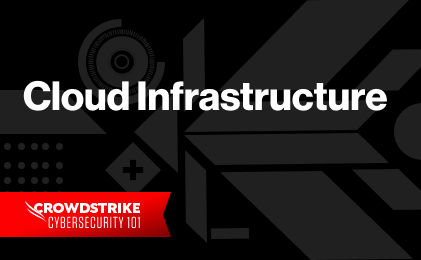Understand CNAPPs with Our Guide
Understand CNAPPs with Our Guide
Your business likely already has corporate governance rules, practices and processes to manage it. This framework covers corporate strategy, ethical behavior and risk management. Corporate governance plays a key role in balancing the interests of company stakeholders such as suppliers, shareholders and management executives.
With the ever-growing shift toward the cloud, businesses need to adapt processes to new technologies. This is where cloud governance comes in. Cloud governance works as a framework, just like corporate governance, designed to run services in the cloud. Working in the cloud provides your teams with opportunities for efficiency and innovation but comes with potential risks and security issues. A cloud governance framework will help you mitigate security risks and ensure the smooth running of your cloud operations.
What Is Cloud Governance?
Cloud governance is a set of policies and rules used by companies who build or work in the cloud. This framework is designed to ensure data security, system integration and the deployment of cloud computing are properly managed. Since cloud systems are dynamic, involving third-party vendors or different teams within your business, cloud governance solutions must be adaptable.
A cloud governance framework done right will manage risks, enhance data security and enable cloud systems operations for your business. This method of cloud computing governance for IT balances resource and risk with a focus on accountability. Without cloud governance you run the risk of poor integration of cloud systems and a lack of alignment with business goals and face new security issues associated with deploying cloud systems.
Cloud Governance Benefits
A good cloud governance framework can provide your business with the following benefits:
- Improves management of resources so there is no overlap for different teams working separately in the cloud.
- Improves cloud security issues by having comprehensive rules and protections in place designed to thwart cybercriminals.
- Helps curb shadow IT — the use of applications, software and services without approval from the IT department.
- Reduces administrative overhead and labor when cloud computing follows the same rules across your entire business.
Whether your business uses the public cloud or private cloud, cloud security provided by cloud computing governance is vital. Ensuring that your business aligns with the principles of cloud governance is a step toward smooth cloud operations.
Setting Up a Cloud Governance Framework
There are three steps involved in setting up a cloud governance framework for your business.
- Define Controls: Define your controls, both financial and operational. This can involve following regulatory rules such as HIPAA, limiting the number of cloud instances you use and deciding who has clearance to make changes to your cloud computing environment.
- Implement Controls: Once you have a policy document defining the rules to fit your business needs, implement those controls. Communicate with teams and employees and optionally use third-party tools to help you implement controls.
- Audit Controls: Continuously monitor controls to make sure you are doing all the right things the right way and monitoring them the right way.
6 Principles of Cloud Governance
Controls can be designed to prevent an issue, detect an issue after it occurs, or correct an issue that has already taken place.
When considering controls, you should take into account 6 principles of cloud governance:
| Principles | Description |
|---|---|
| 1. Financial Management | This principle revolves around creating and implementing a strategy for governance structure to address cloud inefficiencies and higher cloud costs. Which third-party vendor you use and whether you work in the public or private cloud can have an impact. Investing time into financial management helps you understand the costs of the cloud. |
| 2. Cost Optimization | Alongside financial management, measuring, monitoring and optimizing cloud costs is an important principle of the cloud governance framework. The procedures and tools involved in cost optimization can enable your business to manage cloud spend while maximizing cloud investment. |
| 3. Operational Governance | For cloud computing, operational governance is designed to enhance data security, enable smooth cloud operations and manage risks. This helps your business state policies as business processes and enforces these policies throughout your business. |
| 4. Performance Management | This is used to find out how well your cloud system is functioning and identify places for improvement. Performance management cares about the actual performance of hardware and virtual systems and checks workload and memory usage. |
| 5. Asset and Configuration Management | Asset management involves the assets your business uses to deliver IT and cloud services. Configuration management involves tracking the relationship between IT or cloud service components. Together this principle monitors cloud services and deliverables to ensure consistency and quality. |
| 6. Security and Incident Management | Ensuring your cloud operations are secure and having a plan to react should a breach occur are vital for working in the cloud. Cloud security posture management (CSPM), which identifies and remediates risk using threat detection, uninterrupted monitoring and automating visibility, is a good framework to use. Searching for misconfigurations in cloud environments can help bolster public, private and hybrid cloud security. |
Cloud Governance Implementation Challenges
While considering these principles and taking the steps to set up cloud governance, it is important to understand the challenges associated with implementation.
The three most common challenges of implementing a cloud governance framework are cloud adoption, governing data in the cloud, and cloud security. Keeping these challenges in mind, you can implement cloud governance for your business in an effective manner.
Cloud Adoption
The challenges for a business newly adopting cloud computing include skill gaps, existing data center investments, and vendor lock-in. Training your teams to be skilled in the cloud is an important step to take before adopting cloud computing. Understanding your business costs and the process of migrating from on-premises data centers to the cloud is also vital. Some third-party vendors will lock your business in, meaning you won’t be able to easily swap vendors once you start building with them.
You may also find challenges with management buy-in or a lack of metrics for measuring performance and risk. Credential and access management, insufficient identity protocols, and security teams not versed in the cloud can all affect your business security. It is important to embed management controls into your operations and create operating models to alleviate these risks and challenges.
Governing Data in the Cloud
Governing data in the cloud also has challenges related to information security. Following regulations for the types of data your business uses is an important aspect of your data governance framework. It is important to understand the needs of your business and the laws surrounding cloud data governance. If your business follows along with best practices, you can help your business thrive using cloud governance.
Cloud Security
Because of the unique nature of the cloud environment, many of the challenges associated with cloud governance are cloud security challenges like data breaches and system vulnerabilities. Building a strong cloud security strategy is an essential component to keeping your organization's cloud environments safe from adversaries.
Learn More
Read our post on 12 Cloud Security Issues to stay on top of the most common risks, threats, and challenges that can affect the cloud and know how to protect from them.
Cloud Governance Frameworks and Best Practices
Ensuring your cloud governance framework follows best practices is the right path for making your business prosper in the cloud. You can also use a cloud governance model as a guide for your business.
The three main components of a cloud governance policy are financial management, automation and orchestration, and continuous compliance. Financial management aligns with multiple principles of cloud governance and helps your business manage costs. Automation and orchestration help your business run smoothly in the cloud. Compliance with rules and regulations is a must for any business.
The objectives for cloud security governance include risk management, strategic alignment and value delivery. To achieve these goals for your business, you can follow these best practices:
- Enable cost management by developing a strict process for determining real cost savings.
- Create a governance team to ensure teams across your business are following the framework.
- Establish programmatic controls for automating processes and establishing security protocols.
Learn More
Dive deep into the best practices listed above and learn some other ones by reading our post on Cloud Security Best Practices to ensure your cloud environments stay protected.
Some governance models that can be used for cloud governance include:
- ITIL v3, which has process guidance and best practices for service management foundational to cloud computing.
- COBIT 5, a framework for enterprise IT governance.
- COSO, a framework of internal controls created by the Committee of Sponsoring Organizations.
For your business, you should choose a framework and best practices that mesh with your business goals.
CrowdStrike Cloud Security Solutions
Once you understand the challenges of cloud governance and design it to fit your business needs, it’s time to implement it. In many cases, third-party tools can do heavy lifting in terms of security for the cloud when it comes to effective cloud governance.
Powered by the CrowdStrike® Security Cloud, the CrowdStrike Falcon® platform leverages real-time indicators of attack, threat intelligence, evolving adversary tradecraft and enriched telemetry from across the enterprise to deliver hyperaccurate detections, automated protection and remediation, elite threat hunting and prioritized observability of vulnerabilities.







